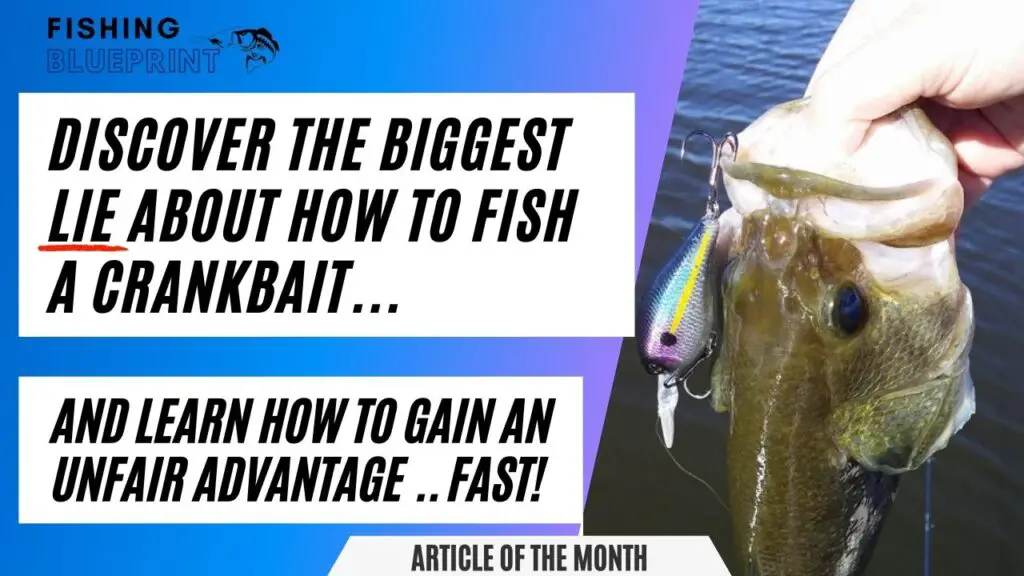How To Fish Los Banos Reservoir
Los Banos Reservoir Fishing Report
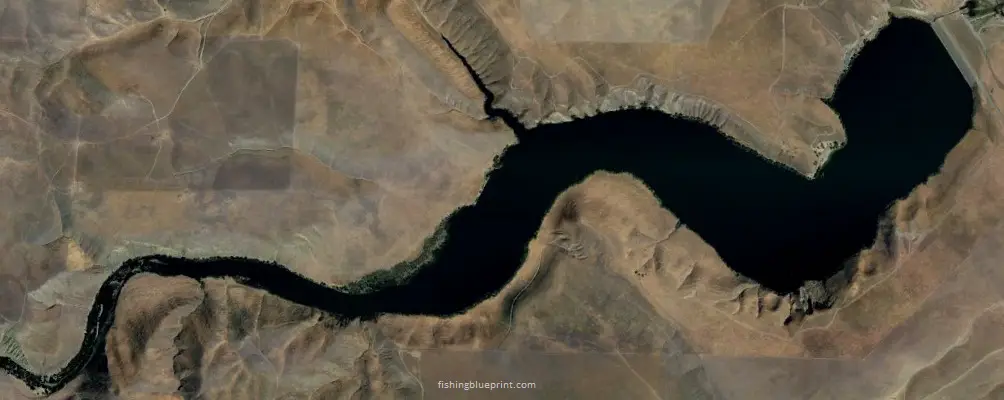
Los Banos Reservoir is a small lake that sits 130 miles away from San Francisco and 267 miles away from Los Angeles.
Overall it’s a quiet lake being nestled just southeast of San Francisco and in this post you’re going to be given the blueprint to fish this lake.
So what are the best tips for fishing Los Banos Reservoir? There are three important factors you must know if you want to know how to fish Los Banos Reservoir successfully. First, you need to know what kind of fish is in Los Banos Reservoir. Second, it’s important for you to know which part of the lake each species can be found in. Lastly, knowing what are the best baits that work on Los Banos Reservoir is vital. However, tactics, baits, and locations will be different for each type of fish that you target. So let’s talk about the steps you need to take in order to give you the best chance of catching a fish on Los Banos Reservoir.
About Los Banos Reservoir
Los Banos Reservoir is a moderately deep body of water with the average depth being 60 feet and a maximum depth of 90 feet when the lake is completely full.
According to recreation.gov, “The reservoir has 620 water surface acres and 12 miles of shoreline”.
Important Lake Warnings
Algae blooms may be present which may affect fishing, swimming, and water contact in general.
There are only 20 boats allowed on this lake.
“There is a 5 MPH speed limit on the entire lake, making it pleasant for small watercraft such as kayaks and canoes to have a favorable safe experience.”,parks.ca.gov
According to parks.ca.gov, “every one of California’s new laws requires boat operators to have a California Boating Card. The card is required for anyone under the age of 41 to operate a boat in California’s waters.”
If you are fishing and camping, fire bans may be in effect due to the ongoing drought conditions.
Key Species at Los Banos Reservoir
- Rainbow Trout
- Largemouth Bass
- Spotted Bass
- Striped Bass
- Black Crappie
- Bluegill and Sunfish
- Catfish
Los Banos Reservoir Fishing Tips & General Strategies
Another picture of the lake or find a YT video
Water Clarity:
Los Banos Reservoir’s water has a pretty moderate level of clarity, meaning most anglers consider it moderately stained. Most of the time visibility varies from 3 to 6 feet.
The best water visibility for sight fishing occurs in the early spring and early summer. Polarized sunglasses are a must-have item to help you detect bass in shallow areas, so don’t overlook bringing these.
Remember that water clarity may quickly drop after a period of heavy rain. Use darker-colored lures (like black with blue flake, or black with red flake). Darker lures create a silhouette the bass can hone in on and attack.
Structures & Fishing Cover:
Bass fishing is really fun at Los Banos Reservoir due to the many different structures and cover there. Here’s what to anticipate:
Rocky banks and points: Points on this lake tend to be some of the best producing structures that you should definitely check out. You should have a good selection of jigs or crankbaits to trigger viscous strikes from bass hiding in the rocks and cuts.
Submerged vegetation: Bass frequently hide out in the underwater vegetation while they wait to ambush their next meal. Use spinnerbaits and Texas-rigged soft plastics in these locations to increase your chances of catching fish.
Timber and brush piles: Yep, this lake had wood and brush piles too! These are excellent during the summer when bass love to hide near the base of the trunk when the weather is hot! Consider utilizing jerkbaits along the edges, Texas-rigged creature baits to flip deep in the brush, or you can use topwater lures for surface activity when fishing in these areas.
Springtime Fishing update
The weather in Los Banos Reservoir changes frequently in the spring. Don’t be surprised if air temperatures can be 60-degrees and the next day it’s 80-degrees out. Warmer days are to be expected as the season goes on, making spring a good time for bass fishing.
Although wind speeds fluctuate, they typically range from 5 to 15 mph. It’s crucial to keep an eye on the weather before heading to the middle of the lake outside because higher wind speeds can occur. The main wind direction is from the northwest.
Springtime Fishing update
The weather in Los Banos Reservoir changes frequently in the spring. Don’t be surprised if air temperatures can be 60-degrees and the next day it’s 80-degrees out. Warmer days are to be expected as the season goes on, making spring a good time for bass fishing.
Although wind speeds fluctuate, they typically range from 5 to 15 mph. It’s crucial to keep an eye on the weather before heading to the middle of the lake outside because higher wind speeds can occur. The main wind direction is from the northwest.
Largemouth Bass Spawn
During late March and early May, Los Banos Reservoir’s largemouth bass spawn.
60°F to 70°F is ideal for bass spawning.
Largemouth bass spawn in shallow, vegetated regions with hard rocky bottoms.
Points and rocky banks: These sites offer bass spawning safety and ambush.
- Hotspots: Salt Creek, Los Banos Dam
Submerged vegetation: Bass use underwater vegetation to hide and deposit eggs. During spawning, these areas are prolific.
- Hotspots: Los Banos Creek, Salt Creek
Los Banos Reservoir – Summer Fishing update
The weather and water temperature has been pretty stable at Los Banos this summer. We have been receiving reports about the fishing here, so here is what you can expect:
Summer Weather
Air temperature: Summer temperatures have been ranging from 85°F to 100°F, with occasional changes. Early morning or late evening fishing was best due to the sweltering mid-day heat.
Wind speed and direction: Wind speeds have been ~5–15 mph, from the northwest
Water temperature: Summer water temperatures have been averaging 75°F to 85°F. Anglers have been reporting in the heat of the day, fish moved into deeper, cooler waters.
Striped Bass have been eating shad, other tiny baitfish, whereas largemouth bass have also been feeding on shad, but also bluegill and crayfish.
Best Techniques for Summer Bass Fishing
- Deep Crankbaiting: With bass seeking cooler depths, using shad colored deep-diving crankbaits around structure and points.
- Drop-shot: This finesse technique is great for calm conditions, also great for targeting suspended bass. Shad colors, morning dawn/pink’ish/purple colors have been working.
- Jigs: Flipping or pitching jigs around submerged vegetation, brush piles have been triggerin reaction strikes from bass.
- Topwater Action: Early morning or late evening, when temperatures are cooler, bass may venture into shallower water. Use topwater lures like a frog, buzzbait, or walking bait to create surface commotion and attract strikes.
Common Reaction Style Baits
- Strike King 6XD Deep Diving Crankbait
- Lucky Craft LV-500 Lipless Crankbait
- River2Sea Whopper Plopper
- Z-Man ChatterBait Jack Hammer
- SPRO Bronzeye Frog
Common Finesse Style Baits
- Yamamoto Senko Soft Plastic Stick Bait
- Roboworm Straight Tail Worm
- Zoom Super Fluke
- Keitech Swing Impact FAT Soft Plastic Swimbait
- Strike King Rage Tail Craw
Specific Locations for Summer Bass Fishing
Los Banos Reservoir does not have well-known specific location names for bass fishing. However, focusing on these types of areas can increase your chances of success:
- Rocky banks and points: Bass often seek out these structures for cover and foraging opportunities.
- Submerged vegetation: These areas can hold bass, especially during the early morning and late evening hours.
- Timber and brush piles: Bass use these submerged structures as cover and ambush points.
- Drop-offs and ledges: Bass may move to deeper water during the hottest parts of the day, making these locations prime targets.
- Inlets and tributaries: Cooler water flowing into the reservoir can attract baitfish and bass, making these spots worth exploring.
But Where Are The Best Places To Fish At Los Banos Reservoir?
And in no particular order here is that list of the best fishing spots at Los Banos Reservoir.
DISCLAIMER: The material provided is for general information purposes only. It’s important to understand that any information provided in this article can change at any time. Any maps or graphics featured are not to be used as navigational aids. Fishing Blueprint will not be responsible for any personal injury or property damage from any misuse of the maps or graphics provided. It’s completely impossible to give you every single spot where you can potentially catch a fish. But, what this list does do is to give you a helping hand and narrow down to the most productive fishing spots.
Los Banos Creek
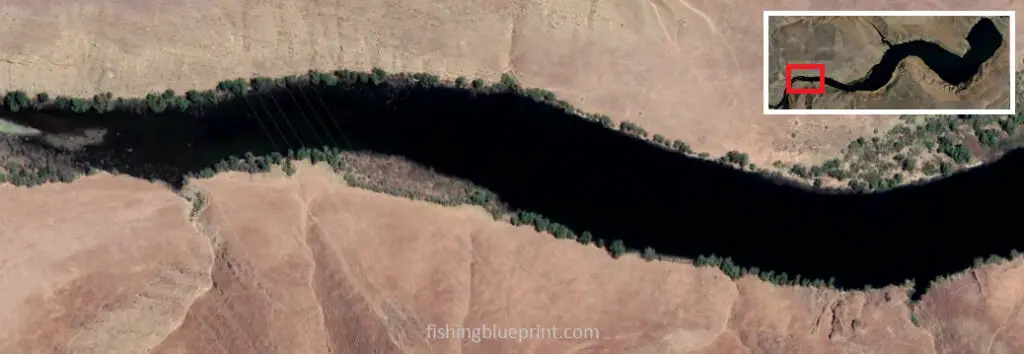
Long winding primary creek channel that has several ledges, drop offs, and rocky high spots, ridges associated with the creek channel swings.
The upper creek has vegetation, flooded brush, and standing timber should be picked apart with a Texas rigged creature bait or a flipping jig.
Located: west lake
Structural features: creek channels, vegetation, brush, vertical timber, ledges, steep rocky bank
Best species to target: Striped bass, trout, largemouth bass, catfish, crappie
Most effective way to fish this spot: boat, kayak, shoreline
Arroyo Padre Flats
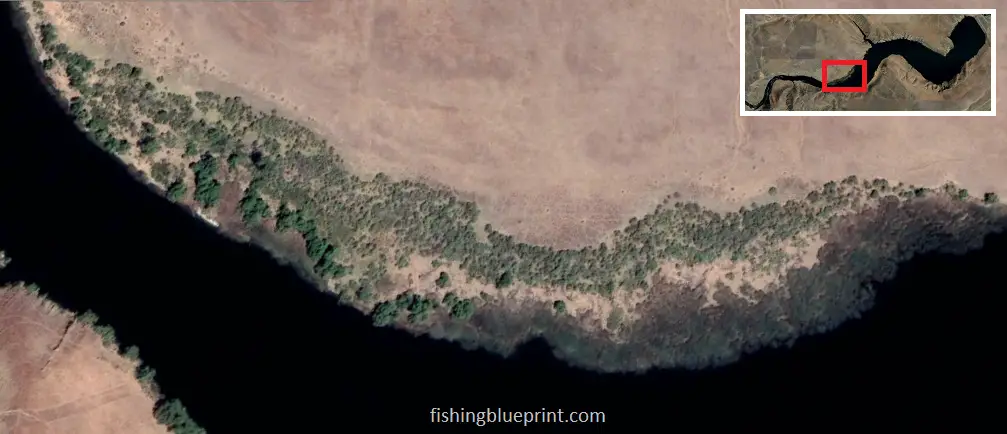
This large area has many fishing options.
Vegetation is common here and can form a floating mat or canopy.
This enormous flat fishes nicely when the weeds are developing or dying, creating deep channels. Bass ambush bait from weed-filled holes.
The fish can hide in this shallow location (4–20 feet deep). In the middle of the day the most productive area the flat near deep water. Be sure to fish the edges.
Finally, this area has weedbed “holes” that are huge. A grass flipping jig, wacky rig senko, Mojo rig, Texas rig, or drop shot will catch bass in these open areas.
Topwater baits, buzzbaits, and whopper ploppers are used over submerged grass.
Crankbait, lipless crankbait, spinnerbait, umbrella rig, swim jig, underspin jig, or chatterbait along weedline edges.
Check hard bottom sections, small rock piles, and high spots on humps for fish.
Crappie fishing over submerged trees as the channel descends may be quite productive, especially at night with a green light.
For catfish and crappie, anchor over the inlet points and fish the deep waterways.
Located: midlake
Structural features: vegetation, brush, vertical timber, ledges
Best species to target: striped bass, largemouth bass, catfish, crappie
Most effective way to fish this spot: boat, kayak, shoreline
Salt Creek
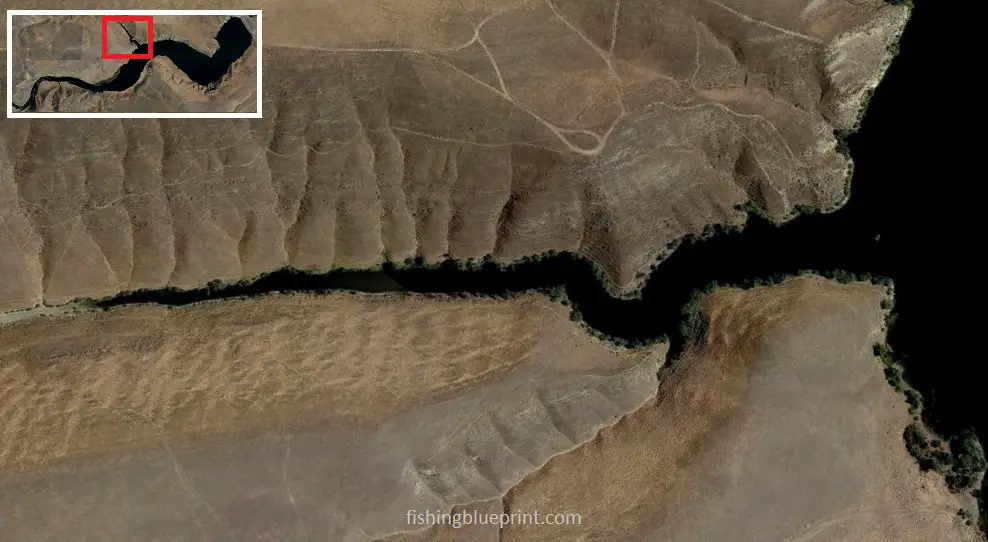
Long creek has a ton of steep rocky banks and the occasional boulder patch.
You’ll most likely often see brush and trees that will line the banks.
The primary forage you find here are crawfish, bluegill, and minnows.
Concentrate on cuts and natural cuts and points the forage will hide among rocks and brush.
A Texas rigged creature bait or a flipping jig. should dissect foliage, flooded brush, and standing timber.
Other areas that are really good are the drop-offs, ledges, and rock piles near the creek channel.
Located: midlake
Structural features: long narrow creek channel, steep rocky bank
Best species to target: striped bass, largemouth bass, catfish, crappie
Most effective way to fish this spot: boat, kayak, shoreline
Los Banos Dam
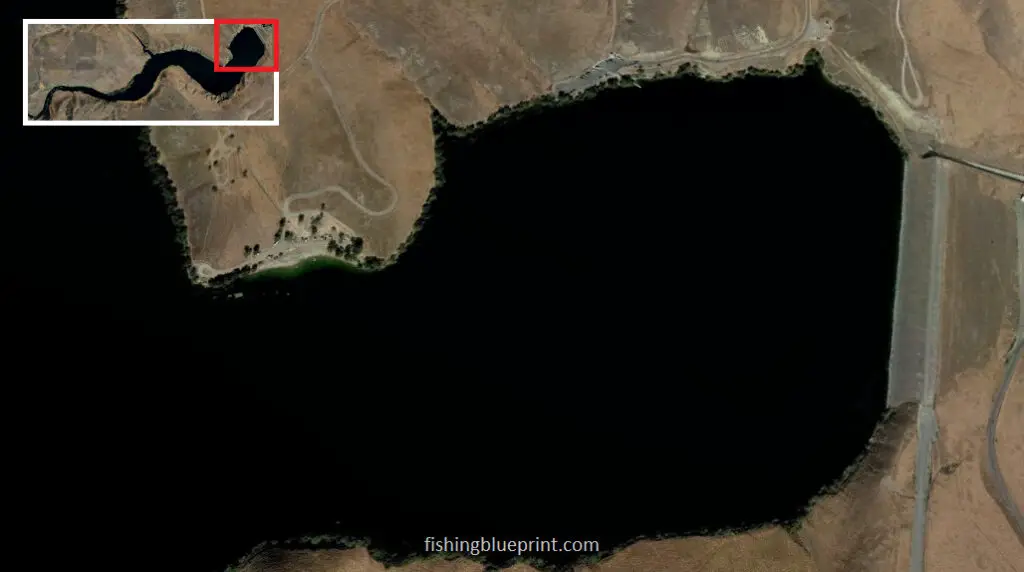
Trolling for striped bass along the dam is great.
This lake area is windy. Even with the greatest trolling motor, the wind can soon blow you off your place, reducing your fishing prospects.
We advise buying a good drift sock. Drift socks are water parachutes. If it’s windy, slow your drift or your lure won’t stay in the strike zone long enough.
Mythik Outdoors makes a great drift sock that’s offered on Amazon.com. Read drift socks reviews here.
In breezy circumstances, minnow-style crankbaits, spinnerbaits, umbrella rigs, and swimbaits work well for striped bass.
Before I forget, did you know there is an article on how to troll for trout the right way? Go here to find out more.
A Carolina rig with a 1-inch frozen anchovy or chicken liver works well for shore fishing.
Located: east lake
Structural features: dam structures, steep rocky bank
Best species to target: Striped bass, trout, largemouth bass, catfish, crappie
Most effective way to fish this spot: boat, kayak, shoreline
Boat Ramps at Los Banos Reservoir
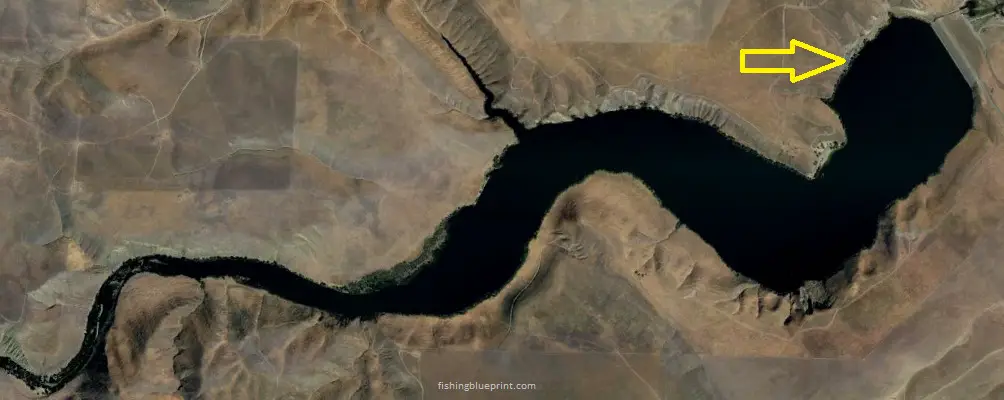
Look Closer…
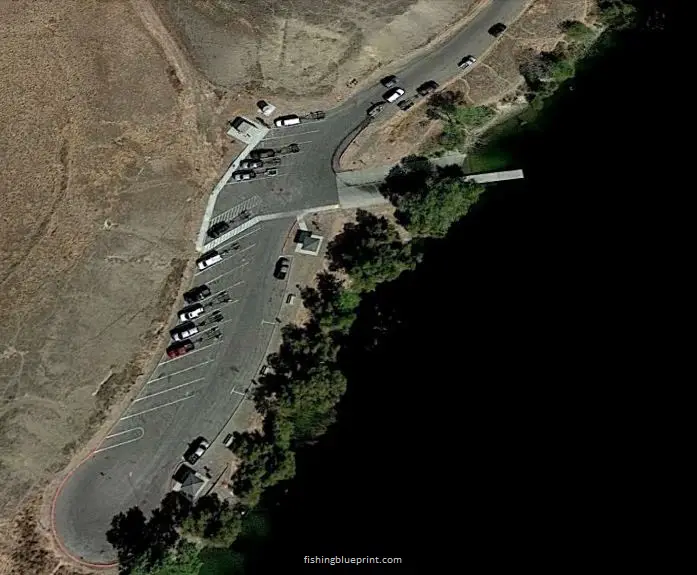
Location: north side near the dam
Lanes: 2
Groceries available: no
Gas: no
Bathrooms: yes
Showers: no
Electric: no
Camping nearby: yes
Places to Tent Camp Or RV Camping At Los Banos Reservoir

Los Banos Creek Campground
- 31426 Gonzaga Road
Gustine, CA 95322 - Telephone: 209-826-6393
- Reservations: parks.ca.gov
- Operating Hours
- Year Round Hours:
- 6am-Sunset
- Camping:
- check-in 2:00 pm
- check-out noon
- “Fourteen undeveloped camping sites are located along the shore of Los Banos Creek Reservoir. Most sites have a shade ramada; all camp sites have a concrete picnic table and stove. There is a beach area located directly in front of the campground that is available to campers until sunset and day users are able to access the beach area from a short trail that starts in the day use parking lot. There is no drinking water available. Chemical toilets are available. Day use parking is prohibited in the campground.”, per parks.ca.gov.
Tackle Shops Near Los Banos Reservoir
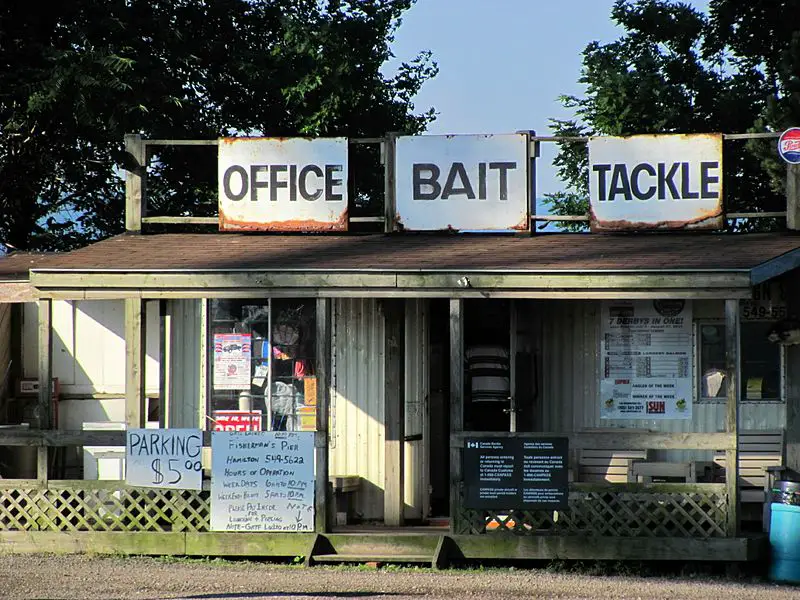
Main Street Market Live Bait and Tackle
13301 CA-33, Gustine, CA 95322
Located in: Santa Nella RV Park
Walmart Supercenter
1575 W Pacheco Blvd, Los Banos, CA 93635
(209) 826-9655
Other California Related Fishing Articles
- Bass Lake Fishing Report
- Clear Lake Fishing Report
- Castaic Lake Fishing Report
- California Delta Fishing Report
- Diamond Valley Lake Fishing Report
- Don Pedro Reservoir Fishing Report
- Eagle Lake Fishing Report
- El Capitan Reservoir Fishing Report
- Lake Berryessa Fishing Report
- Big Bear Lake Fishing Report
- Folsom Lake Fishing Report
- Irvine Lake Fishing Report
- Lake Almanor Fishing Report
- Lake Camanche Fishing Report
- Lake Isabella Fishing Report
- Lake Havasu Fishing Report
- Lake McClure Fishing Report
- Lake Oroville Fishing Report
- Lake Perris Fishing Report
- Lake Piru Fishing Report
- Lake Skinner Fishing Report
- Lake Tahoe Fishing Report
- Los Banos Reservoir Fishing Report
- New Hogan Lake Fishing Report
- New Melones Lake Fishing Report
- O’Neill Forebay Fishing Report
- Pardee Lake Fishing Report
- Pyramid Lake Fishing Report
- San Luis Reservoir Fishing Report
- San Vicente Reservoir Fishing Report
- Shasta Lake Fishing Report
- Silverwood Lake Fishing Report
- Trinity Lake Fishing Report
- Whiskeytown Lake Fishing Report
More articles just for you...
Selecting Early Summer Bass Fishing Lures [Avoid 5 Common Mistakes]
A Complete Buyer’s Blueprint On The Best Early Summer Bass Lures On The Market Today! When it comes to bass fishing, choosing the right lure
Early Summer Bass Fishing [Avoid These 3 Sneaky Lies]
Learn these closely guarded secrets early summer bass fishing … and… dramatically boost your advantage over other anglers! Late spring to early summer bass fishing
Fear The Finesse? 7 Ned Rig Fishing Secrets Exposed!
Conquer the Fear of Finesse… and… Unlock the Potential Ned Rig Fishing – TODAY! Fellow Angler… Like most of you I’m pretty set in my
Fishing Spawning Bass [18+ Lures & Gear]
Get Ready For The Spawn Now When bed fishing, stealth is of the biggest essential tip. Instead of racing forward with a trolling motor, anglers
[2024 Editors Choice] Picking The Best Bass Fishing LINE For ANY Budget
What is the best bass fishing line? | What is a good fishing line for bass? The best type of bass fishing line is based
Drift Sock Basics – What It Is A Drift Sock & How To Use It [2024 Quick Start Guide]
What Does A Drift Sock Do? | Why Use A Drift Sock? photo cred: WLUK We’ve ALL been there… you work your butt off the

